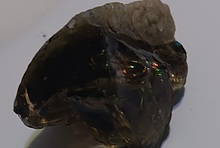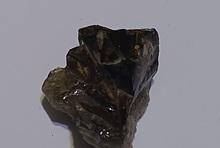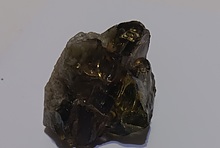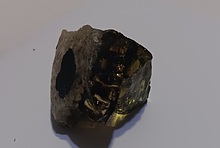Home PageAbout MindatThe Mindat ManualHistory of MindatCopyright StatusWho We AreContact UsAdvertise on Mindat
Donate to MindatCorporate SponsorshipSponsor a PageSponsored PagesMindat AdvertisersAdvertise on Mindat
Learning CenterWhat is a mineral?The most common minerals on earthInformation for EducatorsMindat ArticlesThe ElementsThe Rock H. Currier Digital LibraryGeologic Time
Minerals by PropertiesMinerals by ChemistryAdvanced Locality SearchRandom MineralRandom LocalitySearch by minIDLocalities Near MeSearch ArticlesSearch GlossaryMore Search Options
The Mindat ManualAdd a New PhotoRate PhotosLocality Edit ReportCoordinate Completion ReportAdd Glossary Item
Mining CompaniesStatisticsUsersMineral MuseumsClubs & OrganizationsMineral Shows & EventsThe Mindat DirectoryDevice SettingsThe Mineral Quiz
Photo SearchPhoto GalleriesSearch by ColorNew Photos TodayNew Photos YesterdayMembers' Photo GalleriesPast Photo of the Day GalleryPhotography
╳Discussions
💬 Home🔎 Search📅 LatestGroups
EducationOpen discussion area.Fakes & FraudsOpen discussion area.Field CollectingOpen discussion area.FossilsOpen discussion area.Gems and GemologyOpen discussion area.GeneralOpen discussion area.How to ContributeOpen discussion area.Identity HelpOpen discussion area.Improving Mindat.orgOpen discussion area.LocalitiesOpen discussion area.Lost and Stolen SpecimensOpen discussion area.MarketplaceOpen discussion area.MeteoritesOpen discussion area.Mindat ProductsOpen discussion area.Mineral ExchangesOpen discussion area.Mineral PhotographyOpen discussion area.Mineral ShowsOpen discussion area.Mineralogical ClassificationOpen discussion area.Mineralogy CourseOpen discussion area.MineralsOpen discussion area.Minerals and MuseumsOpen discussion area.PhotosOpen discussion area.Techniques for CollectorsOpen discussion area.The Rock H. Currier Digital LibraryOpen discussion area.UV MineralsOpen discussion area.Recent Images in Discussions
Improving Mindat.orgMonohydrocalcite

9th May 2012 00:28 UTCMichael Hatskel
It may be helpful to introduce a UI validation rule for the Year of Discovery, so that a year later than 1959 could not be entered for a Grandfathered mineral.
I was raising this issue some time ago http://www.mindat.org/forum.php?read,6,256021,256021#msg-256021, but received no response from the IT team. Maybe this time? ;-)

9th May 2012 01:05 UTCAlfredo Petrov Manager

9th May 2012 01:43 UTCMichael Hatskel
I agree that the concept of "grandfathering" is not quite straightforward... But I am not rebelling against the definitions here - I am actually lobbying for adhering to the definitions.
All I am saying is that if 'IMA Status' = G then 'Year of Discovery' must be equal to or lesser than 1959.

9th May 2012 03:57 UTCAlfredo Petrov Manager
We'll have to check the date of first publication. :-S

9th May 2012 04:12 UTCAlfredo Petrov Manager
Pekov gives a complicated history: first noticed1935, chemically analysed in 1948, described in 1959 (chemistry and x-ray data), but not named until 1964. So, as is not uncommon among pre-IMA minerals, the discovery was a long drawn out process and it's hard to say exactly when the species came into being. One could tell similar stories about other now well-accepted pre-IMA minerals, like magnesioriebeckite, for example.
I'll change the year of discovery to 1948, or perhaps 1959 would be better.
9th May 2012 09:19 UTCMarco E. Ciriotti Manager
So the IMA list is correct: "Approved 1964".

9th May 2012 09:53 UTCAlfredo Petrov Manager
9th May 2012 10:21 UTCMarco E. Ciriotti Manager
- Semenov, E.I. (1964): Hydrated carbonates of sodium and calcium. Kristallografiya, 9, 109-110.
- Swainson, I.P.. (2008): The structure of monohydrocalcite and the phase composition of the beachrock deposits of Lake Butler and Lake Fellmongery, South Australia. American Mineralogist, 93, 1014-1018.
About the approval the name is just in an IMA CNMNC file without number and was not published anywhere.

9th May 2012 14:29 UTCMichael Hatskel
If the Year of Approval is 1964, is it correct to show IMA Status = 'Grandfathered'? Maybe the IMA Status shall be 'Approved'?
9th May 2012 15:02 UTCMarco E. Ciriotti Manager
-------------------------------------------------------
> Marco,
> If the Year of Approval is 1964, is it correct to
> show IMA Status = 'Grandfathered'? Maybe the IMA
> Status shall be 'Approved'?
Yes, the status should be "Approved".
Done!

9th May 2012 17:32 UTCMichael Hatskel
Here are some more "Granfathered" minerals with the Year of Discovery showing later than 1959:
Cuprostibite - 1969
Zincocopiapite - 1964
Uralolite - 1964
10th May 2012 00:57 UTCDavid Von Bargen Manager
10th May 2012 12:27 UTCMarco E. Ciriotti Manager
-------------------------------------------------------
> Thanks, Marco.
>
> Here are some more "Granfathered" minerals with
> the Year of Discovery showing later than 1959:
> Cuprostibite - 1969
> Zincocopiapite - 1964
> Uralolite - 1964
The same case of monohydrocalcite.

11th May 2012 18:46 UTCMichael Hatskel
Franconite - 1984, although IMA1981-006. Looks like it was discovered earlier and approved in 1984, as it was published in 1984 (Jambor et al. (1984) - Can Min 22, 239–243).
11th May 2012 20:27 UTCMarco E. Ciriotti Manager
15th May 2012 17:39 UTCJim Ferraiolo

17th May 2012 20:03 UTCMichael Hatskel
I would agree to that assumption for the pre-IMA minerals. But even then minerals were first found, then published, would you agree?
When we definitely know the year of IMA approval, the year of discovery MUST be at least the same year as the latest. But actually it shall be earlier, as it normally takes time to do all of the characterization required for IMA approval.
Another example: Franciscanite - mindat page says Approved 1985, Yr of Discovery 1986.




Mindat.org is an outreach project of the Hudson Institute of Mineralogy, a 501(c)(3) not-for-profit organization.
Copyright © mindat.org and the Hudson Institute of Mineralogy 1993-2024, except where stated. Most political location boundaries are © OpenStreetMap contributors. Mindat.org relies on the contributions of thousands of members and supporters. Founded in 2000 by Jolyon Ralph.
Privacy Policy - Terms & Conditions - Contact Us / DMCA issues - Report a bug/vulnerability Current server date and time: April 19, 2024 03:07:02
Copyright © mindat.org and the Hudson Institute of Mineralogy 1993-2024, except where stated. Most political location boundaries are © OpenStreetMap contributors. Mindat.org relies on the contributions of thousands of members and supporters. Founded in 2000 by Jolyon Ralph.
Privacy Policy - Terms & Conditions - Contact Us / DMCA issues - Report a bug/vulnerability Current server date and time: April 19, 2024 03:07:02











